2 POINTS that show the value of Hikone Castle
-
Function and Concentration on the Inside It became very apparent that the functions and system of the daimyo government made for fairer policy making. This was due to the containment of all senior vassals and facilities necessary for local governance inside the castle, forming a unity through ordered arrangement.

-
Symbolism and Segregation from the Outside The presence of sole and fair authority by daimyo was visualized and symbolized with dignity. Individual cozy relationships of politicians were extremely restricted as they were physically isolated from surrounding urban areas.

5 political characteristics of Tokugawa Japan as evidenced in the castles
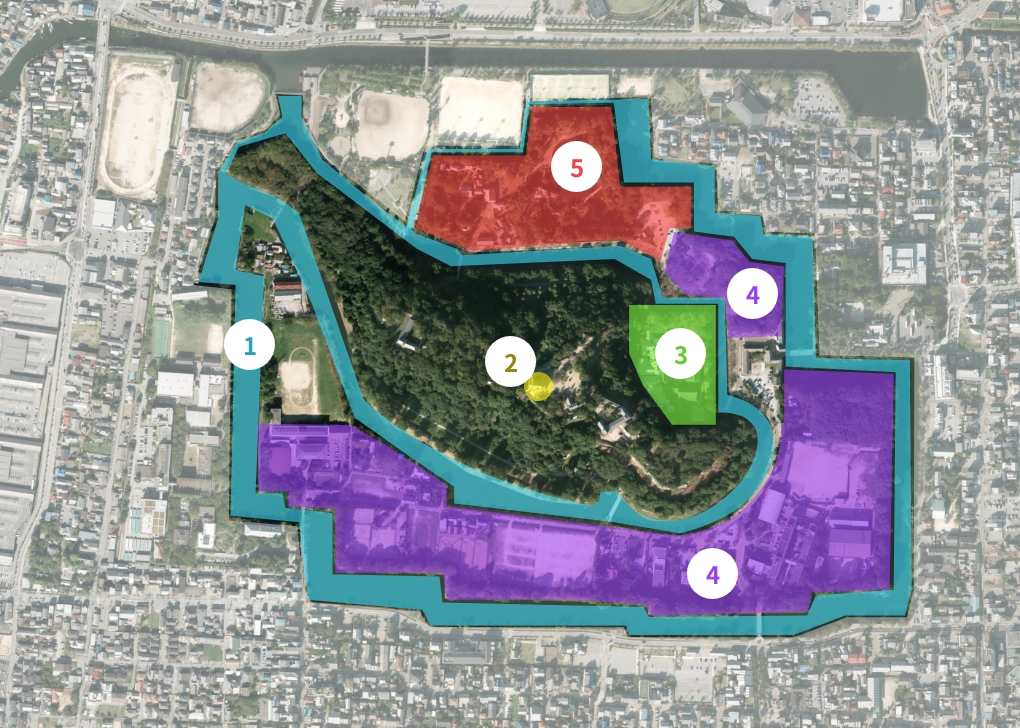
-
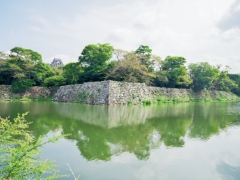 ①Doble Moats and Stone Walls Doble Moats and Stone Walls strictly demarcate the castle and clarify the boundaries. At Hikone Castle, the current location of the moats and stone walls are well preserved and correspond accurately with figures of old drawings from the Tokugawa Period.Old drawing and aerial photo
①Doble Moats and Stone Walls Doble Moats and Stone Walls strictly demarcate the castle and clarify the boundaries. At Hikone Castle, the current location of the moats and stone walls are well preserved and correspond accurately with figures of old drawings from the Tokugawa Period.Old drawing and aerial photo -
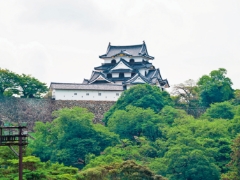 ②Castle Keep The Castle Keep symbolizes the presence of sole and legitimate authority. Its dignified appearance is well visible from afar. In regards to Hikone Castle, its gorgeous roof with opulent decorations enables people to discern from other castles, with just a glance.
②Castle Keep The Castle Keep symbolizes the presence of sole and legitimate authority. Its dignified appearance is well visible from afar. In regards to Hikone Castle, its gorgeous roof with opulent decorations enables people to discern from other castles, with just a glance. -
 ③Daimyo’s Palace The Daimyo’s Palace is the most essential facility in the castle. It was daimyo’s residence and was used to conduct political ceremonies and hold consultation with senior vassals. In regards to Hikone Castle, the daimyo’s palace was authentically reconstructed as a museum, its archeological remains preserved, and used to display political records and treasures of daimyo. The policy of the Hikone’s government was decided in this historic location.
③Daimyo’s Palace The Daimyo’s Palace is the most essential facility in the castle. It was daimyo’s residence and was used to conduct political ceremonies and hold consultation with senior vassals. In regards to Hikone Castle, the daimyo’s palace was authentically reconstructed as a museum, its archeological remains preserved, and used to display political records and treasures of daimyo. The policy of the Hikone’s government was decided in this historic location. -
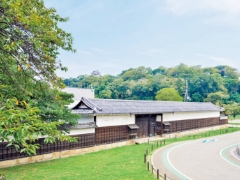 ④Senior Vassals’ Residences Senior vassals resided in the castle and their residences were arranged in order of rank in the castle. Each one of them played a supplemental role in the daimyo government. Inside Hikone Castle, about 30 senior vassals resided in the castle and engaged in politics. One of the largest row-house style gates shows the power of its senior vassal, its size denoting how powerful the senior vassal was.
④Senior Vassals’ Residences Senior vassals resided in the castle and their residences were arranged in order of rank in the castle. Each one of them played a supplemental role in the daimyo government. Inside Hikone Castle, about 30 senior vassals resided in the castle and engaged in politics. One of the largest row-house style gates shows the power of its senior vassal, its size denoting how powerful the senior vassal was. -
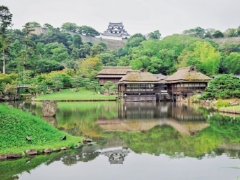 ⑤Daimyo’s Garden In the ideal, beautiful landscape of gardens, daimyo and their senior vassals raised the level of their cultural appreciation through various ceremonies, cultural activities, and shared values. At Hikone Castle, this timeless, authentic, preserved garden called Genkyuen Garden, a national scenic spot, is the only place where people can view the authentic castle keep.
⑤Daimyo’s Garden In the ideal, beautiful landscape of gardens, daimyo and their senior vassals raised the level of their cultural appreciation through various ceremonies, cultural activities, and shared values. At Hikone Castle, this timeless, authentic, preserved garden called Genkyuen Garden, a national scenic spot, is the only place where people can view the authentic castle keep.
Although those basic characteristics were common among 180 castles nationwide, most of castles were lost through the demolition and war damage after the Tokugawa Period. Thus, Hikone Castle is now the only remaining castle that can illustrate the governance of Tokugawa Japan through the above five characteristics.





